The number 11-12 (Nov-Dec 1972) of Italian architecture magazine Controspazio presented a retrospective of the earliest “design researches” by the couple Franco Purini / Laura Thermes.
The article was part of an ongoing series titled L’architettura Interrotta (“Interrupted architecture“) and the same issue featured another retrospective dedicated to arch. Ludwig Leo that we already featured on Socks.
 Study of the relation between the base, the volumes and the linear elements; analysis of a process of “construction”; axonometries related to the phases of the definition of the building.
Study of the relation between the base, the volumes and the linear elements; analysis of a process of “construction”; axonometries related to the phases of the definition of the building.
The (then) relatively young Purini and Thermes, architects, teachers and writers, have started a collaboration since 1966 after studing with Ludovico Quaroni at the Faculty of Architecture of Rome – La Sapienza and working with both Maurizio Sacripanti and Vittorio Gregotti. Their work, based upon the practice of the architectural drawing, confronts the lines of rationalism and of the classical tradition with suggestions of metaphysical character. Their recognition came, rather than from the built work, after participating to the very first Venice Biennale of Architecture (1980) when they were called by Portoghesi (also director of Controspazio) to contribute, along with other renowned architects, to the design of the “Strada Novissima” installation.
The following drawings are from one of the paragraphs of the Controspazio retrospective, titled “1968. Studio di elementi architettonici” (“1968. Study of architectural elements“). The following introduction was written in Italian by Franco Purini.
ln these drawings it is attempted a classification of typical situations in the relationship between the volume (cube), the plane and the linear element, in a hypothesis of architectural “composition” as a form of notation or “writing.”
The cube, the base, the linear element (column, tower), the wall are the pieces of a series of formal connections, in an elementary formulation of the “construction”, referring particularly to the theme of the trilithon.
The reduction of the objects (elements) to a limited number, the classification by sections of their relations, the construction of space as coexistence of these “objects” and as a ratio with respect to a reference plane (base or wall), allows to set up a “description” of the composition based on a closed number of propositions, in an attempt to constrain the project by forcing the comparison with a series of primary preordinate situations.
The central reference is to the structure of a classical temple and to the special connection that is built into it among the constituent elements.
In this hypothesis it is present the reference to the construction site (as the place of technological practice), whose functional processes are interpreted in their succession and in the order of the artefacts (the base, the wall that defines it in the elevation, the superimposed trilith) that are produced there.
The analysis by parts of the building tends to express this growth through additions of finite objects. That makes it possible to rethink the “constructive”process within a series of stages, each determined in its own formal autonomy. (translated from Italian by Socks)
ln queste tavole si è tentata una classificazione di situazioni tipiche del rapporto tra il volume (il cubo), il piano e l’elemento lineare, in una ipotesi di « composizione » architettonica come una forma di notazione o «scrittura ».
Il cubo, il basamento, l’elemento ad andamento lineare (colonna, torre), il muro sono i pezzi di cui si propongono alcune connessioni formali in una formulazione elementare della «costruzione », riferita particolarmente al tema dell’impianto trilitico.
La riduzione degli oggetti (elementi) ad un numero limitato, la classificazione per sezioni dei loro rapporti, la costruzione dello spazio come compresenza di questi «oggetti » e come rapporto rispetto ad un piano di riferimento (basamento 0 muro), permette di istituire una « descrittiva » della composizione basata su un numero chiuso di proposizioni, nel tentativo di condizionare il progetto obbligando al confronto con una serie di situazioni primarie preordinate.
Il riferimento centrale è alla struttura del tempio classico e alla particolare connessione che si costruisce in esso tra gli elementi costitutivi.
È presente in questa ipotesi il riferimento al cantiere (come luogo della pratica tecnologica), i cui procedimenti funzionali sono interpretati nella loro successione e nell’ordine dei manufatti (il basamento, il muro che lo definisce in alzato, il trilite sovrapposto) che vi si producono.
L’analisi per pezzi della costruzione tende ad esprimere questa crescita per addizioni di oggetti finiti. Cio permette di ripensare il procedimento « costruttivo » dentro una serie di fasi determinate ciascuna nella propria autonomia formale.
Click on some of the images to enlarge.

Project for a lamellar skyscraper (perspectives, elevations and sections)

Project for a lamellar skyscraper (perspectives, elevations and sections)
 Study of the attack situations between volumes and base. Relationships in elevation between base, plates (walls) and linear elements (pillars, gates, towers)
Study of the attack situations between volumes and base. Relationships in elevation between base, plates (walls) and linear elements (pillars, gates, towers)
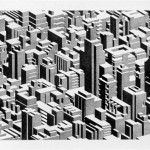
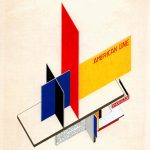
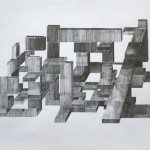
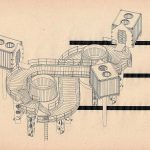
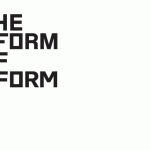
this was very good from Purini, at that time he did very interesting work which was influenced by the Roman architect Maurizio Sacripanti (with whom Purini collaborated) and the painter Gastone Novelli. However compared to these references, Purini was much more abstract and to a certain extent he anticipated both Eisenman’s early houses and the work of Japanese anti-metabolist architects such as the great Hiromi Fuji.
To see these projects makes one wondering what happened to Purini after. How someone who could do this amazing work could have design such horrible stuff, like the Casa del Farmacista in Gibellina and even worst the Eurosky tower in Rome.